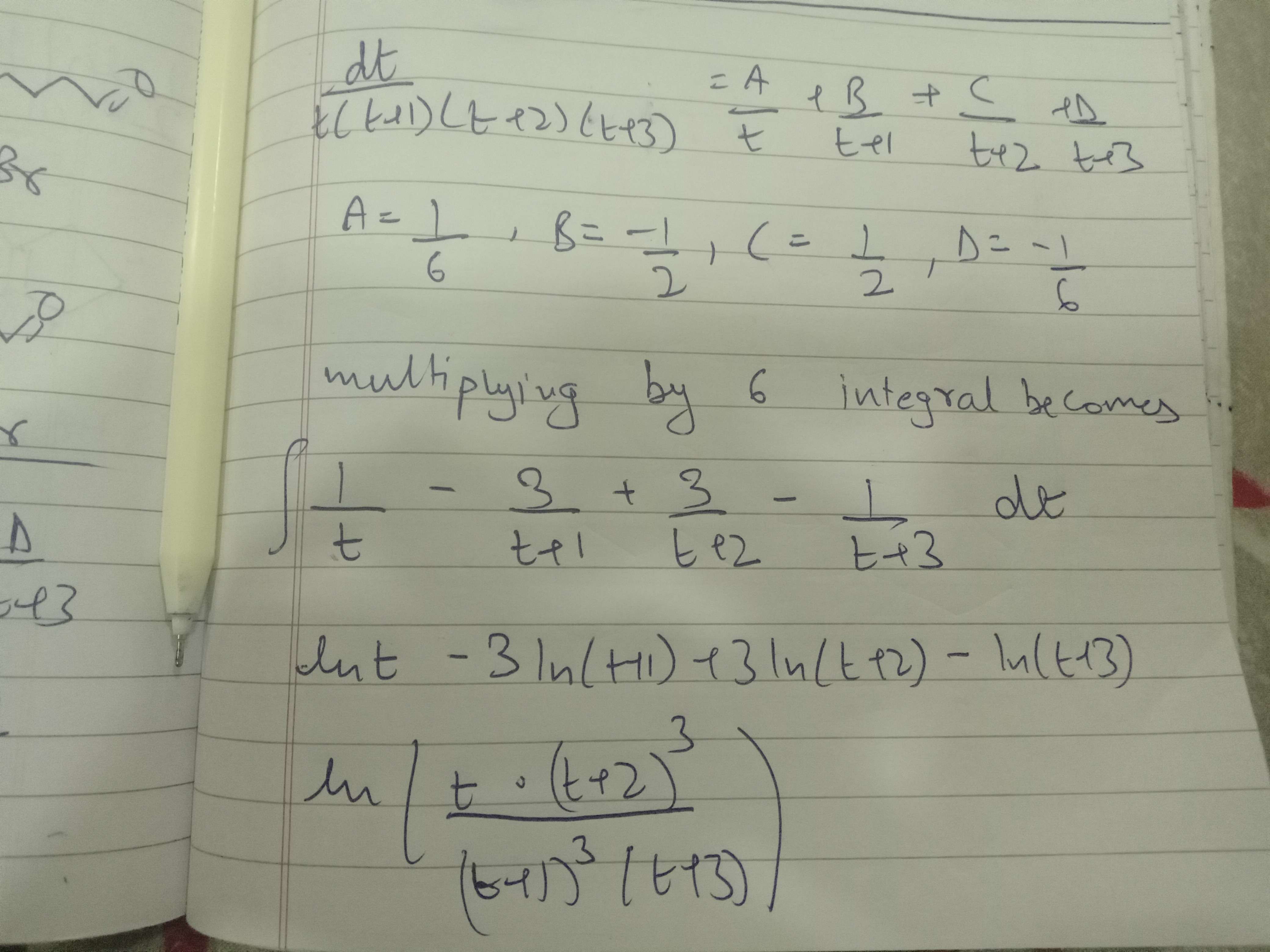29 Replies
@Apu
Note for OP
+solved @user1 @user2... to close the thread when your doubt is solved. Mention the users who helped you solve the doubt. This will be added to their stats.the demoninator is (t+1)(t+2)(t+3) . now i used partial fraction for this to get

Now using this i do


P.S : i could have dividied numr and denomr with e^x and then 1+ae^-x = t T-T
isko factorise nahi kar sakte? (u+ a) (u +b) type?
similar to what you have done
answer galat hai kya?
imperfect :P
Yes . Ln ke andar wali term is diff
wait if t = e^x
then dt/t = dx right?
sorry about that rude edit
but
t^4 nahi hoga?
there will be another t here
e^x dx = dt
So I multiply upar neeche with e^x
keep it in t till the end to make life easy
Wait which part are we discussibg
all of it
The breaking using partial fraction???
this part is off :D
there needs to be another t there.
Ahhh
jaldi mat kar :P
dhairya
But this ss is from given soln. I was. Getting this too
i am talking about this.
t ke terms me poora karo and end me subsitute na.
if the ans is ln 32/27
then do this
So I do partial fractions in 1/t(t+1)(t+2)(t+3)
And integrate wrt t
yep
that should get you the answert
but woh shuru ke part me pakka kar
if $e^x=t, dx=dt/t$
iTeachChem

YAY
i know it is the same thing as multiply div etc but jaldbazi me galat ho jaata hai
go from first principles

Correct ?
looks good to me! but be careful about limits, it is infinity to 0 so t= 1 when x is 0
idk what happens at e^ infiinite lol.
we apply limit which is just 1 . ln(1)=0
but why doesnt my method work
what you habve done above works
i just dont know what is e^ infinite
